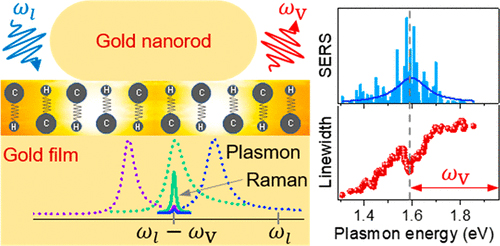Molecular Optomechanics Induced Hybrid Properties in Soft Materials Filled Plasmonic Nanocavities
Bisweswar Patra, Bijesh Kafle, and Terefe G. Habteyes


The optomechanical interaction between nanocavity plasmons and molecular vibrations can result in interfacial phenomena that can be tailored for sensing and photocatalytic applications. Here, we report for the first time that plasmon-vibration interaction can induce laser-plasmon detuning dependent plasmon resonance linewidth broadening, indicating energy transfer from the plasmon field to collective vibrational modes. The linewidth broadening accompanied by the large enhancement of the Raman scattering signal is observed as the laser-plasmon blue-detuning approaches the CH vibrational frequency of the molecular systems integrated in gold nanorod-on-mirror nanocavities. The experimental observations can be explained based on the molecular optomechanics theory that predicts dynamical backaction amplification of the vibrational modes and high sensitivity of Raman scattering when the plasmon resonance overlaps with the Raman emission frequency. The results presented here suggest that molecular optomechanics coupling may be manipulated for creating hybrid properties based on interactions between molecular oscillators and nanocavity electromagnetic optical modes.
Available for purchase here.
